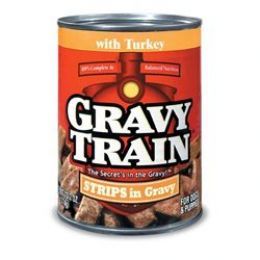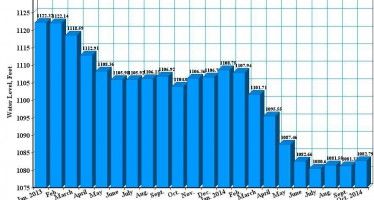High-speed gravy train approved in Assembly and Senate
July 6, 2012
By Katy Grimes
UPDATE: 4:45 p.m.
SACRAMENTO — The Senate barely eked out passage of the high-speed rail bill, after a very close vote, 21-16. The vote approves the sale of $4.7 billion in bonds to begin building the Fresno to Bakersfield segment of high-speed rail.
Ongoing lobbying of the wavering Senate Democrats continued even as floor speeches were taking place. The buzz was that stern phone calls were made, including calls from U.S. Rep. Nancy Pelosi of San Francisco.
Sen. Gloria Negrete McLeod, D-Chino, was the decisive vote, after several attempts to reach 21 “yes” votes.
Democrats talks incessantly about all of the jobs they think will be created, while Republicans tried to explain the false economy, massive debt, and house of cards a train-to-nowhere will actually create.
More details to come…
ORIGINAL STORY:
The California Assembly passed the high-speed rail bill on Thursday, after hours of debate. It was clear from the outset that the facts of the multi-billion dollar boondoggle weren’t going to prevent Democrats from supporting SB 1029.
The bill contained language to release $4.6 billion in voter-approved state bonds, originally from Proposition 1A, to start construction of a high-speed rail system in the Central Valley.
The bill still needs approval of the Senate, which is expected to vote Friday.
And this was all done after canceling a scheduled three-hour informational hearing on high-speed rail.
Assemblyman Curt Hagman, R-Chino Hills, offered an amendment which would have placed High-Speed Rail back on the ballot for voters to approve, since the spending of the project has grown exponentially larger than what voters originally approved in 2008.
“High schools, not high-speed rail,” Hagman said. Hagman proposed placing high-speed rail back on the ballot before voters, and said education should come first.
Hagman said that Californians are constantly told by Governor Brown and the Democrats that the only way to save public education is through higher taxes. And he reminded colleagues that Assembly Republicans have laid out a balanced budget plan, which fully funded education.
“Instead the governor and majority party uses the fear of draconian cuts to public education in hopes of getting voters to pass higher taxes so they can fund their pet projects,” Hagman said. “It is ironic that the Democrats and Governor Brown are strong proponents of anti-bullying measures, yet at the same time try to bully California voters into accepting unneeded higher taxes.”
In a press release, Hagman stated, “At the same time that the Democrats are holding our children’s futures, teachers, and entire public education system hostage, they want to go forward with the costly California High Speed Rail Project. In addition to the billions of dollars it would take to construct the system, it is projected that high speed rail would cost Californians between $330 million and $5 billion annually out of the general fund. This money should be used to fund our deteriorating public education system instead of being directed toward a boondoggle.”
“High speed rail was sold to the voters as an efficient and timely solution to the state’s transportation and economic needs. In reality, the project has become nothing more than a fiscal nightmare, which comes at the expense of our children and education system,” Hagman said.
“We need to represent our constituents, not the High Speed Rail bureaucracy, not Governor Brown, and not President Obama’s political needs for this project.” said Assemblyman Hagman, “Californian have spoken and it is time that the Democrats pay attention to their message: put high speed rail back to the voters.”
But the Assembly voted to kill his ballot proposal 51-25.
And then the drama really began.
High-speed into bankruptcy
The arguments for and against High-Speed Rail were as diametrically opposed as the two political parties.
“High-speed rail in my district represents hope for the future… High-speed rail represents the opportunity for a good paying job,” said Assemblyman Henry Perea, D-Fresno.
“We’re spending money we don’t have,” said Assemblyman David Valadao, R-Hanford.
“How dare we consider this bond,” Assemblyman Jim Nielsen, R-Gerber, said. “Where are the private sector investors? I am almost embarrassed to be part of this Legislature. How dare we abdicate legislative fiscal authority.”
“This is flat-out nuts!” Assemblyman Tim Donnelly, R-Hesperia, said. “It’s a train we don’t need, with money we don’t have. We are taking people’s homes and businesses to do it. People all over the world are laughing at California.”
“We can’t take care of essential services, and are facing $6 billion in trigger cuts to education,” Donnelly contrinued. “This is a high-speed train robbery from our children, and our children’s children.”
“This is only a bond,” Assemblywoman Nancy Skinner, D-Berkeley, said. Uh huh. And “free money” really exists.
Big lie
The lie of the day goes to Assemblyman Roger Dickinson, D-Sacramento, for his fairytale depiction of Sacramento’s light rail train system. Dickinson said that bringing light rail to Sacramento was a “citizen-led movement,” popular with Sacramento residents.
This claim is a load of horse apples. Light rail was forced on Sacramento by insecure, greedy local politicians who, just like the Legislature, wanted to be the first to have light rail trains running through the city.
Sacramento already had a profitable and highly popular bus system. The buses actually took people exactly where they needed to go. But the addition of light rail trains interrupted that successful system, entirely changed many of the bus routes to feed trains, instead of taking people directly to their destinations. And, Regional Transit has never dug out from the massive debt the system continues to add to.
“As we added light rail ridership, it went from being unaffordable to ‘when will it get to my neighborhood,’ Dickinson said.”
What Dickinson left out is that Sacramento’s light rail is 80 percent subsidized, and the city gives tickets to welfare recipients. Government employees receive subsidized bus and train passes, and the trains are often empty.
A regular, full price monthly pass on Light Rail costs $100. State employees receive a $35 pass.
When the system was put in, tracks were laid through some of Sacramento’s busiest intersections, causing huge traffic jams, and traffic backups during rush hour. This was deliberate. Several years ago, when I was writing a story for the Sacramento Union about Sacramento Regional Transit, a city planner admitted to me off the record, that they have been trying to force people out of their cars, onto light rail, by making traffic conditions so intolerable.
The direct-to-the-airport “Green line” has advertisements painted over its windows, in a seemingly clever public relations attempt to prevent anyone from seeing how empty it usually is.
The 22 reviews of Sacramento Regional Transit on yelp would be hilarious if they weren’t so horrible. Most reviewers complained about the cost of $6 a day to ride anywhere, the habitually late buses, angry, nasty bus and light rail operators, safety and security issues, filth, overcrowding on buses, worthless security guards, no late night operation, train breakdowns, and buses full of “people you only see in your nightmares.”
Adding to the lie of the day…
Adding to Dickinson’s big lie, the Sacramento Bee editorial today proved just how clueless they are when it comes to the state’s history, as well as any responsible fiscal policies.
“California lawmakers shouldn’t be cowed by the polls or consumed by parochialism when it comes to financing high-speed rail,” the editorial stated. “Yes, it’s true that public support for high-speed rail has diminished since voters approved bond funding in 2008.”
“Yet California would never have reached its infrastructure glory days of the 1960s if politicians were as cowardly as some seem now,” the Editorial Board concluded. “Excuse us, but has anyone examined how the state built the freeways of Southern California, the bridges of the Bay Area or universities such as California State University, Long Beach? All involved debt and investments by taxpayers, and none was built in a day.”
What the brain trust at the Bee failed to mention is that much of the state’s infrastructure was built out of great need. The freeways were built to transport goods and people. You can’t have a movement of people until there is a way to provide transportation of goods and services.
Roads, highways, trains, planes and ships, were built to transport goods. People followed. But high-speed rail is just a single-purpose people mover. And it’s not out of any legitimate need; high-speed rail sounds cool, so naturally California politicians want to be the first in the West to have it.
“Nearly everyone who has studied high-speed rail says it makes sense to build the first segment in a flat, unobstructed place where trains can reach the highest speeds and the system can be tested and refined,” the Editorial stated.
This is another big lie. Nearly everyone who has studied high-speed rail says building the first segment in the Central Valley is a train-to-nowhere, and merely a way to grab the $3.3 billion from the federal government, and spend the money on union jobs and expensive consultants.
“Trains and bikes are not 21st century transportation,” Assemblywoman Diane Harkey, R-Dana Point, said. “If any of you had read any of the reports by the legislative counsel, you’d see that high-speed rail will suck money from your transportation budgets.”
“We are giving our authorization for $8 billion to tear up prime agricultural land for tracks,” Harkey said. “You are running through neighborhoods for 130 miles of track — not trains.”
Harkey also pointed out that all of the state’s infrastructure was build with revenue bonds, and not General Obligation bonds.
A city or the state has the option of raising tax rates or levying new taxes in order to meet its obligation to bondholders. This is one sneaky way to raise taxes to pay for High-Speed Rail.
GO bonds also impact the credit of a municipality; it is doubtful if California has much credit left.
The biggest lie
Proponents of California High-Speed Rail have argued that it is cheaper to put in the high-speed train system, than to make much-needed repairs to existing freeways, or to beef up the state’s freeway system.
Assemblywoman Cathleen Galgiani, D-Stockton, the mother of all of the high-speed rail bills, said it would take 12 lanes of highway to do what high-speed rail could do.
And she claimed that the state will benefit from all of the tax revenue generated by “putting people back to work.”
High-speed rail is a case of spending $10 to make $1, and proof that it is not only a giant lie, Democrats are perpetuating this very expensive lie, and don’t appear to care who knows.
The bill was passed on a party line, 52-29. Take a look at the vote and see how your elected representative voted.
Related Articles
LA and SF dogfight over transport visions
In San Francisco, a bus project over a decade in the making finally receives its massive environmental impact report. In
7 ways James Fallows is wrong about the CA bullet train
Writing on The Atlantic’s website, the much-respected journalist/intellectual James Fallows — a Redlands native who knows California better than nearly
Hoover Dam low water to double water costs to SoCal
California is facing yet another drought-caused water and energy shortage from an unexpected source. Hoover Dam’s hydroelectric power may





